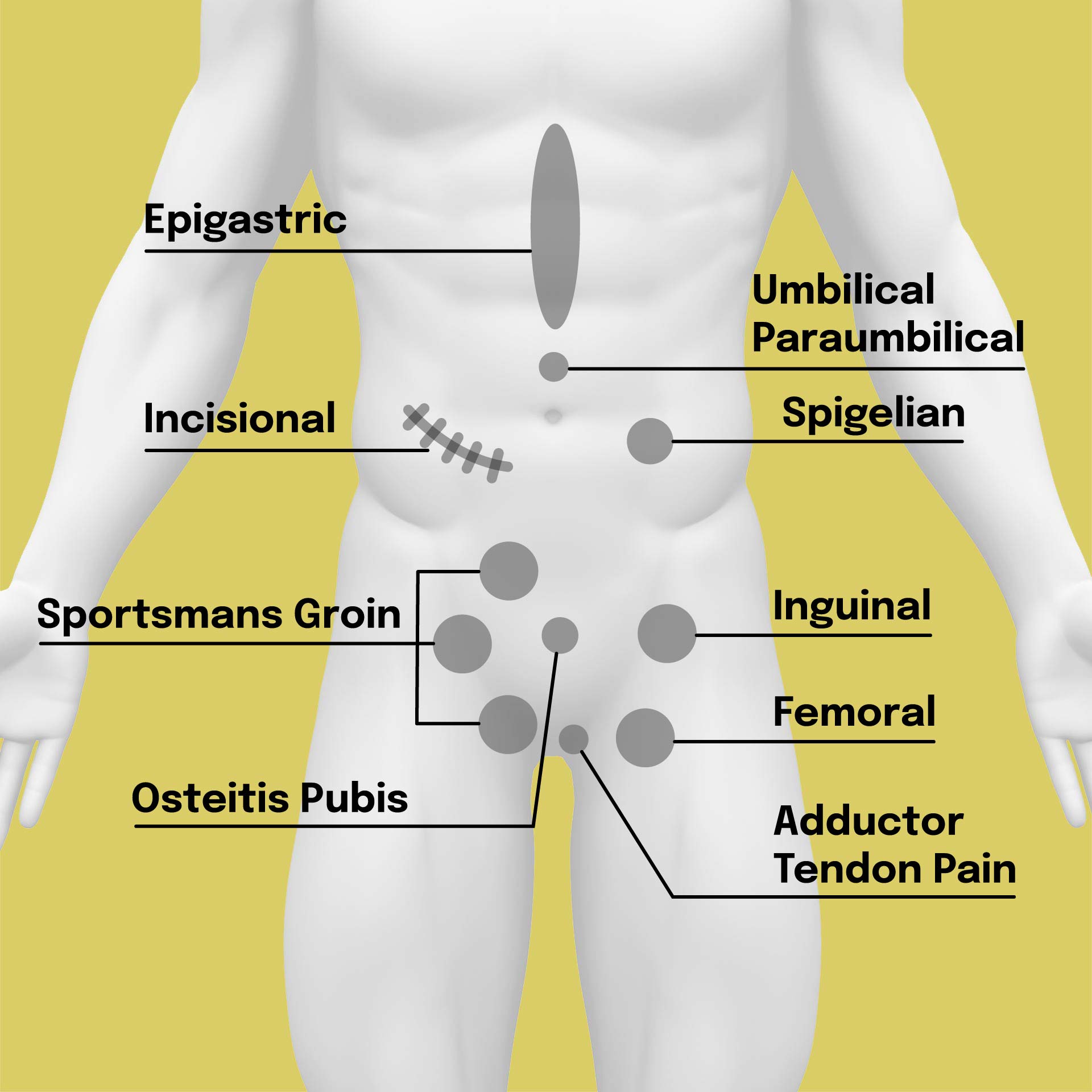Umbilical / Paraumbilical Hernia
Hernias which occur around the umbilicus (belly button) is termed umbilical or paraumbilical hernias.
In Children
Umbilical hernia may be present from birth and are the result of the muscle wall failing to close around the site of the umbilical cord. Umbilical hernias will usually improve spontaneously as the muscle wall strengthens and develops. In fact, 85% of all umbilical hernias will close spontaneously. If the hernia persists beyond the age of 4 or 5 years, they are less likely to improve and may well require surgery.
Complications
It is uncommon for umbilical hernias in children to strangulate, and hence it is reasonable to avoid surgery and adopt a wait-and-see policy.
In Adults
In adults, hernias which occur in the area around the umbilicus are termed paraumbilical hernias.
The umbilicus is a natural point of weakness in the abdominal wall. The size of the hole in the abdominal wall is often small. As a result, paraumbilical hernias can become strangulated. For this reason, surgery is usually recommended.
Symptoms and Signs
A palpable lump around the umbilicus, often but not always with a cough impulse.
Diagnosis
The diagnosis is usually made based on findings at clinical examination
Investigations
Usually, the diagnosis is made clinically. Ultrasound, CT and MRI may be helpful but are not usually necessary.
Management
Surgical repair is usually recommended. This is generally performed under general anaesthesia (asleep). If small the hernia is repaired directly with stitches, if larger then the hernia is repaired using a mesh, inserted through a small incision or laparoscopically (keyhole surgery).

